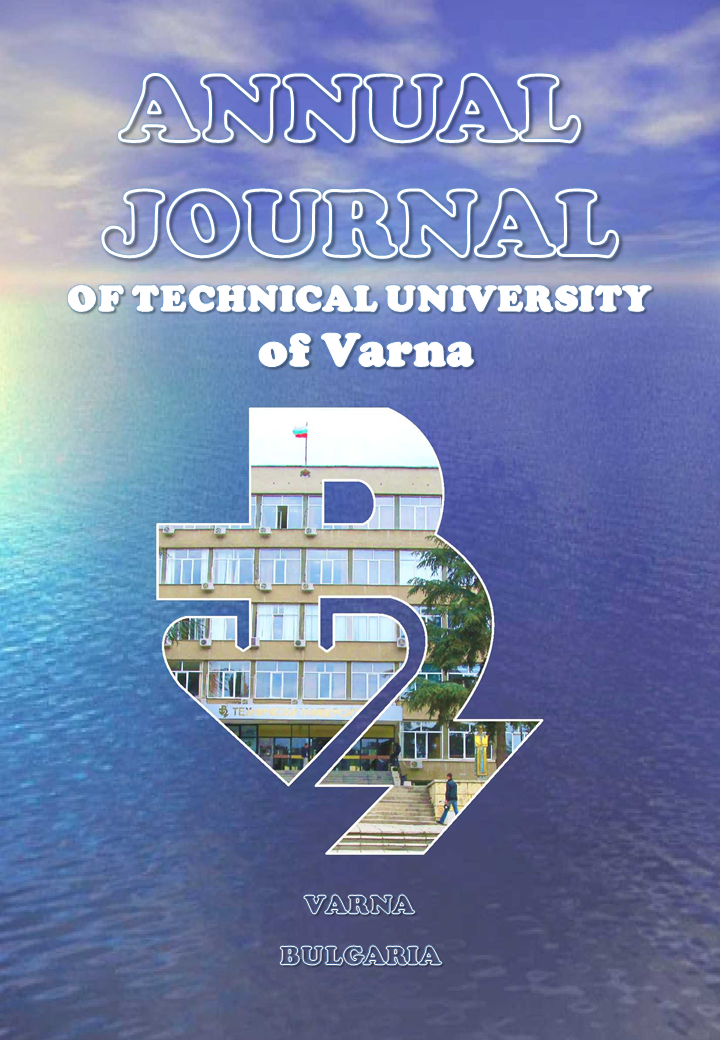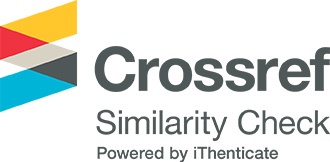Onshore ballast water management systems: National perspectives
##semicolon##
https://doi.org/10.29114/ajtuv.vol7.iss1.288##semicolon##
ballast water##common.commaListSeparator## bioinvasion##common.commaListSeparator## onshore facilities##common.commaListSeparator## ports BulgariaАбстракт
The present paper focuses on ballast water management systems (BWMS) in line with the Ballast Water Management Convention, aiming to prevent marine pollution from harmful alien species transported through ships’ ballast water. Three approaches of BWMS are considered: Ballast water exchange, Onboard and Onshore systems. Solutions regarding ballast water reception and treatment are proposed, including several options: for ports that are equipped with ballast water reception facilities (BWRFs); for ports not equipped with BWRFs and for companies with onshore facilities (OBWRFs).Thoroughly examined in the paper is the applicability of national onshore BWMS inclusive specifically of the expected users of the OBWRFs; suggested stakeholder groups involved in the process and their responsibilities; step by step procedure; documentation of the procedure related to the main parties - the Shipowner/ captain, Port authority, the company with OBWRFs. It has been found out that OBWRFs are more suitable to be applied on national level, bearing in mind that most of the Bulgarian ports are limited to increase their working area. Further research should be carried out about the possible location of the OBWRFs with regard to the necessary infrastructure, equipment, restricted zones, etc.
Изтегляния
##submission.citations##
Albert, R., Everett, R., Lishman, J. & Smith, D. (2010). Availability and efficacy of ballast water treatment technology: Background and issue paper. Information report to Scientific Advisory Board, Washington D.C., pp. 65. Retrieved from <a href= "https://www3.epa.gov/npdes/pubs/vessels_efficacy_ballast_final.pdf" target="_blank"> https://www3.epa.gov/npdes/pubs/vessels_efficacy_ballast_final.pdf </a>
<br/>
Barry, C., Hayes, R., Hewitt, L., Behrens, L., Dragsund, E. & Bakke, M. (2008). Ballast water risk assessment: principles, processes, and methods. ICES J. Mar. Sci., 65, pp. 121-131. <a href="https://doi.org/10.1093/icesjms/fsn004" target="_blank"> <br/> Crossref </a>
<br/>
David, M., Gollasch, S. & Pavliha, M. (2013). Global ballast water management and the same location concept – a clear term or a clear issue? Ecol. Appl., 23 (2), 331-338. <a href="https://doi.org/10.1890/12-0992.1"target="_blank"> <br/> Crossref </a>
<br/>
David, M. & Gollasch, S. (2016). Ballast water management options for vessels. In book: Ballast water management system for Adriatic Sea protection (BALMAS), Chapter: Activity 4.3., pp. 77. Retrieved from <a href="https://www.researchgate.net/publication/313115533_Ballast_water_management_options_for_vessels" target="_blank"> <br/> https://www.researchgate.net/publication/313115533_Ballast_water_management_options_for_vessels </a>
<br/>
David, M. & Gollasch, S. (2017). Ballast Water Treatment Systems – A Summary. In book: Emerging Risks from Ballast Water Treatment, Chapter: 4, Publisher: Federal Institute for Risk Assessment, pp. 23-30. Retrieved from <a href="https://www.researchgate.net/publication/235346645_Ballast_Water_Treatment_Systems_-_a_Summary 158" taget="blank"> <br/> https://www.researchgate.net/publication/235346645_Ballast_Water_Treatment_Systems_-_a_Summary 158 </a>
<br/>
Diasamidze, M. & Shotadze, A. (2019). Ballast water management and their system processing. Fundamental and Applied Researches in Practice of Leading Scientific Schools. 31(1), pp. 58-60. <a href="https://doi.org/10.33531/farplss.2019.1.11" target="blank"> <br/> Crossref </a>
<br/>
Donner, P. (2010). Ballast Water Treatment Ashore Brings More Benefits. WMU Journal of Maritime Affairs, 9, pp. 191-199. <a href="https://doi.org/10.1007/BF03195174" target="blank"> <br/> Crossref </a>
<br/>
GEF-UNDP-IMO (2010). GloBallast Partnerships Programme and IUCN. Economic Assessments for Ballast Water Management: A Guideline. GloBallast Monograph Series No.19. London: GloBallast Partnerships Programme Coordination Unit. Retrieved from <a href="https://portals.iucn.org/library/sites/library/files/documents/2010-075.pdf" target="blank"> <br/> https://portals.iucn.org/library/sites/library/files/documents/2010-075.pdf </a>
<br/>
Kuroshi, L. & Ölçer, A. (2016). Technique selection and evaluation of ballast water manage-ment methods under an intuitionistic fuzzy environment: An information axiom ap-proach. Int. J. Eng. Marit. Environ., 231(3), pp. 1-19. <a href="https://doi.org/10.1177/1475090216674543" target="_blank"> <br/> Crossref </a>
<br/>
Kuroshi, L. (2017). Design and Evaluation of Ballast Water Management Systems using Modified and Hybridised Axiomatic Design Principles. World Maritime University Ph.D. Dissertations. 1. Retrieved from <a href = "https://commons.wmu.se/phd_dissertations/1" target ="_blank" > <br/> https://commons.wmu.se/phd_dissertations/1 </a>
<br/>
Lloyd’s (2011). Lloyd’s Register Report. Ballast Water Treatment Technology Current Status. 4th edition, pp. 7-12. Retrieved from <a href= "https://www.yumpu.com/en/document/view/9258264/ballast-water-treatment-technologies-and-current-lloyds-register" taerget="_blank"> <br/> https://www.yumpu.com/en/document/view/9258264/ballast-water-treatment-technologies-and-current-lloyds-register </a>
<br/>
Molnar, J., Gamboa, R., Revenga, C. & Spalding, M. (2008). Assessing the global threat of inva-sive species to marine biodiversity. The Ecological Society of America (ESA), Frontiers in Ecology and the Environment, 6 (9), pp. 485-492. <a href="https://doi.org/10.1890/070064" target="_blank"> <br/> Crossref </a>
<br/>
Nicastro, A., Bishop, M., Kelaher, B. & Benedetti-Cecchi, L. (2009). Export of non-native gas-tropod shells to a coastal lagoon: alteration of habitat structure has negligible effects on infauna. Journal of experimental marine biology and ecology, 374 (1), pp. 31-36. <a href="https://doi.org/10.1016/j.jembe.2009.04.005" target="_blank"> <br/> Crossref </a>
<br/>
Pam, D., Li, X., Wall, A., Yang, Z. & Wang, J., (2013). A subjective approach for ballast water risk estimation, Ocean Engineering, 61, pp. 66-76. <a href="https://doi.org/10.1016/j.oceaneng.2012.12.045" target="_blank" > <br/> Crossref </a> <br/>
Ruiz, G. & Reid, F., (2007). Current state of understanding about the effectiveness of ballast water exchange (BWE) in reducing aquatic nonindigenous species (ANS) introductions to the great lakes basin and Chesapeake bay, USA: Synthesis and analysis of existing information. NOAA Technical Memorandum GLERL-142, pp.143, Retrieved from <a href="www.glerl.noaa.gov. http://purl.access.gpo.gov/GPO/LPS93114" target="_blank" > <br/> www.glerl.noaa.gov. http://purl.access.gpo.gov/GPO/LPS93114 </a>
<br/>
Subaṣi, E. & Dogan-Saglamtimur, N. (2013). Performance Evaluation of the Martas Port Waste Reception Facility Treatment Plant (Tekirdag, Turkey). Desalination and Water Treatment, 51(13-15), pp. 3040-3046. <a href= "https://doi.org/10.1080/19443994.2012.748454" target="_blank"> <br/> Crossref </a>
<br/>
Tamelander J., Riddering, L., Haag, F.and Matheickal, J. (2010). Guidelines for Development of National Ballast Water Management Strategies. GEF-UNDP-IMO GloBallast, London, UK and IUCN, Gland, Switzerland. GloBallast Monographs No. 18, pp 54. Retrieved from <a href="https://wwwcdn.imo.org/localresources/en/OurWork/PartnershipsProjects/Documents/Mono18_English.pdf" target = "_blank"> <br/>https://wwwcdn.imo.org/localresources/en/OurWork/PartnershipsProjects/Documents/Mono18_English.pdf </a>
<br/>
Wang, Q., Cheng, F., Xue, J., Xiao, N., Wu, H.. (2020). Bacterial community composition and diversity in the ballast water of container ships arriving at Yangshan Port, Shanghai, China. Marine Pollution Bulletin, 160, 111640, <a href="https://doi.org/10.1016/j.marpolbul.2020.1116402020" target="_blank"> <br/> Crossref </a>
<br/>
Wesley W., Chang, P., Verosto, S., Atsavapranee, P., Reid, F., & Jenkins, T. (2006). Computational and experimental analysis of ballast water exchange. Naval Engineering Journal, 3, pp. 25-36. <a href="https://doi.org/10.1111/j.1559-3584.2006.tb00460.x" target="_blank"> <br/> Crossref </a>
<br/>
Wonham, M. and Carlton, J. (2005). Trends in marine biological invasions at local and regional scales: the Northeast Pacific Ocean as a model system. Biological Invasions, 7(3), pp. 369-392. <a href="https://doi.org/10.1007/s10530-004-2581-7" target="_blank"> <br/> Crossref </a>
</p>
##submission.downloads##
Публикуван
##submission.howToCite##
Брой
Раздел (Секция)
##submission.license##
СПОРАЗУМЕНИЕ ЗА ПУБЛИКУВАНЕ
Годишника на Технически университет - Варна (ГТУВ) цели да гарантира, че постъпващите статии се публикуват, като същевременно се предоставя значителна свобода на публикуващите ги автори. За изпълнение на тази цел, ГТУВ поддържа гъвкава политика относно авторските права, което означава, че няма прехвърляне на авторски права от автора на издателя, а авторите запазват изключително авторско право върху интелектуалното си произведение.
При изпращане на статия, Отговорния автор трябва да се съгласи и приеме правилата и условията за публикуване, изложени в настоящото Споразумение за публикуване, които са както следва:
ПРЕДОСТАВЯНЕ НА ПРАВА ОТ ОТГОВОРНИЯ АВТОР
Отговорния автор предоставя на ГТУВ за времето на пълния срок на авторското право и всяко следващо удължаване или подновяване, следното:
• Неотменимо, неизключително право да публикува, възпроизвежда, предоставя, разпространява или по друг начин използва предоставената работа в електронни и печатни издания и в производни произведения в целия свят, на всички езици и във всички известни съществуващи или в последствие възникнали медии.
• Неотменимо, неизключително право да създава и съхранява електронни архивни копия на работата, включително правото да депозира предоставената работа в дигитални хранилища с отворен достъп.
• Неотменимо, неизключително право на лицензиране на други лица да възпроизвеждат, превеждат, преиздават, предоставят и разпространяват предоставената работа при условие, че авторите са надлежно идентифицирани (за момента това се извършва чрез публикуване на произведението под лиценз Creative Commons Attribution 4.0 Unported).
С предоставянето на работата за публикуване, авторските права върху материала остават на авторите. Авторите запазват всички патентни, търговски марки и/или други права върху интелектуалната си собственост.
ЗАДЪЛЖЕНИЯ НА ОТГОВОРНИЯ АВТОР И СЪАВТОРИТЕ
При последващо разпространение или повторно публикуване на предоставената работа, Отговорния автор се съгласява да идентифицира ГТУВ, в който е публикувано произведението като първоначален източник на първото публикуване на работата. Отговорния автор гарантира, че съавторите също ще посочват ГТУВ като източник на първото публикуване, когато разпространяват, преиздават или се позовават на настоящата работа в бъдещи свои публикации.
ГАРАНЦИИ ОТ СТРАНА НА ОТГОВОРНИЯ АВТОР
Отговорния автор гарантира че предоставената за публикуване работа не нарушава никои действащи нормативни разпоредби или законни права на която и да е трета страна. Същия гарантира че работата не съдържа какъвто и да е материал, който може да се възприеме от читателската аудитория като неетичен, компрометиращ, нехуманен, расистки, клеветнически и/или нарушаващ авторски и/или имуществени права, права на интелектуална собственост или поети ангажименти за поверителност към трети страни. Отговорния автор гарантира че предоставеният материал е с оригинално съдържание, не е официално публикуван в никое друго издателство, както и че не е в процес на публикуване пред други издателства. Отговорния автор също така гарантира че притежава съответните правомощия да сключи настоящото споразумение. Ако предоставяната работа е подготвена съвместно с други съавтори, Отговорния автор гарантира че всички останали съавтори са информирани и са съгласни предоставения материал да бъде публикуван в ГТУВ.
Отговорния автор лично (или от името на авторския колектив) дава съгласието си да не въвлича по никакъв начин ГТУВ като страна в каквито и да било научни, академични, административни и/или съдебни спорове, в случаите на установени нарушения на горепосочените декларации и гаранции.
ПРАВА И ЗАДЪЛЖЕНИЯ НА ГТУВ
ГТУВ се съгласява да публикува предоставения материал, в случаите когато същия отговаря напълно на всички необходими качествени, технически и редакционни изисквания, като го идентифицира еднозначно с авторите му. В следствие на настоящото споразумение, на ГТУВ се предоставя правомощие да упражнява права при необходимост от името на авторите върху трети лица, като например в случаите на установено плагиатство, нарушаване на авторски права и др.
Декларация за поверителност на лични данни
Вашите имена и имейл адреси, въведени в уебсайта на ГТУВ, ще бъдат използвани само и изключително за обявените цели на настоящото списание и няма да бъдат използвани за никакви други цели от издателя или предоставяни на друга - трета страна.
Издателят се задължава да извърши всички необходими действия, цялата предоставена лична информация да остане конфиденциална, в рамките на издателя и да не бъде споделена с външни обекти или субекти, освен ако не е дадено предварително изрично разрешение от собственика на личните данни.
Вашата лична информация няма да бъде обект на продажба, разпространение или публикуване по какъвто и да е начин и под каквато и да е форма.









